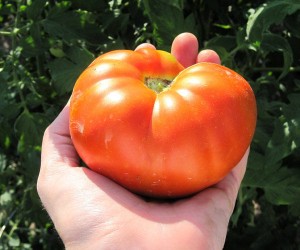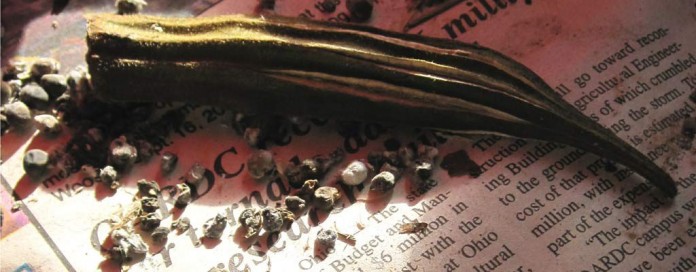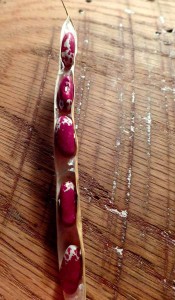“Spit the good ones into a cup!” I yelled at my husband. He was taking a break on the hay wagon, enjoying homegrown watermelon. “Today’s seed, tomorrow’s crop!”
Saving seed is smart. It is a critical skill for self-sufficiency. Saving seed also saves time and money. Plants produced from homegrown seeds may be better adapted to local climate conditions and pests.
What seeds should I save?
Seed from open-pollinated varieties produce plants like the parent. Seed from hybrid varieties will NOT produce plants like the parent.
Related: This season’s seed, next season’s harvest: A seed saving primer
To replicate desirable traits, save seed from open-pollinated plants only. Choose well-developed fruit with strong stems and vibrant foliage. Do not save seed from diseased, poorly-developed or accidentally crossed plants.
How to save seeds
Melon and watermelon can be harvested at edible stage or left on the vine to ripen further. Scoop out seeds and rinse well. Dry.
Cucumber should be left on the vine past ideal eating ripeness in order for seeds to fully mature. Harvest bloated and orange cucumbers, scoop out seeds and rinse away pulp.
Squash, both summer and winter, can be harvested at edible stage or left in the field until a hard frost is expected. To save seed, cut squash open, scoop out seed, soak overnight and rinse away pulp. Dry.
Allow beans, cowpea and peas to dry on the plant. When the pods are 80% yellow-brown, cut the plant and harvest the seed. Dry.
Peppers should be harvested when they look ready to eat. Remove seed and dry.

Corn and popcorn must dry in-husk on the stalks. After the husk is completely dry, remove it and use your fingers to remove the corn kernels from the cob. Dry.
Okra must dry on the plant. It is adequately dry when it rattles. Cut okra open, remove seed.
How to dry and store
Seed must be completely dry before storing. I dehydrate seeds in a food dehydrator at 85 degrees F until they feel brittle.
Garden supply stores sell silica gel for seed drying and preservation. You can also save the tiny packets of silica gel from shoe boxes and other goods and place them alongside seed in an airtight container until seed is completely dry.
Any material can be used for seed storage, but envelopes and cloth don’t protect seeds from pests. Plastic, glass and metal containers with lids keep seeds safe and restrict moisture better than paper or fabric.
Store seeds in cool, dry conditions for best results. A cool pantry or garage is fine, so long as it is pest free. The refrigerator or freezer are good places to keep seed cool, dry and pest free.
How to test seed germination

- Moisten a paper towel with a spray bottle. Set the damp towel on a plate.
- Place at least 10 seeds on towel, ½” apart.
- Top with a second damp paper towel.
- Cover the plate with loose plastic wrap.
- Annotate variety, date and time.
- Keep plate in a warm (70-80 degree F) place. Moisten paper towels with additional water if they start to dry out. Check seeds daily until the majority of seeds have germinated. 2-20 days depending on vegetable variety.
- After 20 days, calculate germination rate. 8 out of 10 seeds in an 80% germination rate.
A low germination rate indicates poor seed quality. You may choose to plant your seed at greater density to make up for germination shortfalls.
2 more posts about saving seed
- This season’s seed, next season’s harvest: A seed-saving primer Aug. 22, 2014
- Growing chestnut trees from seed Dec. 19, 2013
- Saving seeds over winter Oct. 17, 2012
Meet the next foodie!
Sign up for
Around the Table.
It's a FREE weekly e-newsletter all about food. Sign Up Today!

















